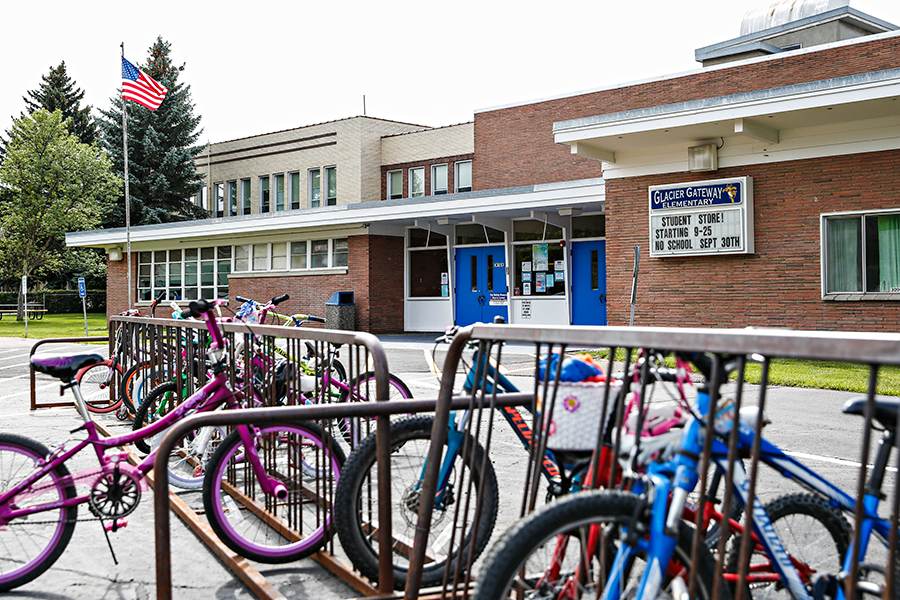Ballots were mailed out to voters on Sept. 19 for a $37 million elementary school bond issue in the Columbia Falls School District that would build a new elementary school, remodel and expand an existing one and fund other updates.
The ballots are due back to the district administrative office by Oct. 8. There are approximately 9,000 registered voters in the elementary district.
If approved, the bond would fund construction of a new 75,000-square-foot Glacier Gateway Elementary directly to the west of the existing school, which was built in 1940, as well as demolition and remodeling at the current facility, at a total cost of roughly $25.7 million. The bond would also refurbish the existing Ruder Elementary School, which was built in 1975, and add 24,125 square feet, a project totaling about $10.2 million.
The bond issue also calls for constructing new multi-use fields between Ruder and the junior high school. The district notes that the community already lacks sufficient multi-use fields, which would be exacerbated by the new Glacier Gateway displacing an existing field. With parking, that project would cost about $954,000.
Lastly, the bond would fund a new secure entrance to the junior high to improve safety at a cost of approximately $200,000.
The $37.07 million bond would add $18.86 per month to the tax bill of a home with a market value of $200,000, which is about $226 per year. But that cost would be partly offset by a junior high school bond coming off the books at the end of the school year, bringing the actual cost to about $12.17 per month, or $146 per year, for a $200,000 home.
District officials say the junior high school bond’s relinquishment makes the timing optimal for the new bond, along with historically low interest rates.
The two elementary schools each currently have almost 500 students, and a steering committee process with a consultant identified enrollment increasing to about 650 students per school over the course of the bond’s 20-year lifespan.
School officials say Glacier Gateway has a range of significant maintenance needs — including electrical, mechanical, plumbing, heating and cooling — as well as an obsolete layout that is not conducive to modern education models that emphasize collaboration.
Dustin Zuffelato, business manager for the district, said the district has tried to update and replace piecemeal over the years, but the deferred maintenance expenditures on such an old building “keep racking up” to the point that it’s no longer economically viable to continue that approach, particularly factoring in the expenses of bringing everything up to code. There are also safety concerns with the current design.
Replacing the HVAC system, piping and mechanical equipment alone would cost $4 million, and remodeling the entire building would cost $19 million, according to the district. But that still wouldn’t solve the issue of an out-of-date building format and would disrupt classes, unlike building an entirely new school.
“It’s becoming much more of a challenge to tinker here and there,” Zuffelato said, noting the detrimental effects that overheated classrooms without proper air ventilation can have on students’ learning.
The north wing of the current Glacier Gateway would be demolished, while the gym, which is newer, would be incorporated into the design and layout of the new building. The south wing, which is the old junior high, would be maintained in its current state with no future use yet identified.
District officials say Ruder also suffers from outdated infrastructure and deferred maintenance needs, including heating boilers that have never been replaced. The gym is used as a dining space, which the district says takes away up to four periods a day from required physical education, constrains the rest of the school’s schedule and limits other opportunities for students. Its design also requires students to routinely pass from the main building to the annex, posing safety concerns, and the school is overcrowded.
Members of the public have questioned why the district doesn’t reopen Canyon Elementary School in Hungry Horse, which shut down in 2010. The district says the same financial problems that led to the school’s closure exist today, as the school was designed to serve about 250 students when it was built in 1988 but was serving fewer than 100 when it closed. The district continues to serve only about 100 students from the Canyon area.
The district says reopening Canyon Elementary would mean cutting $1 million from the general fund budget in order to operate the school, “resulting in an insurmountable annual operating budget deficit.”
“In summary, electing to reopen the Canyon Elementary School would require the district to transport and relocate students who reside within the city limits, would result in cuts to programs in the existing two buildings, and the district would still face cost(s) to maintain and replace the aging infrastructure at the existing two elementary schools,” the district states.
